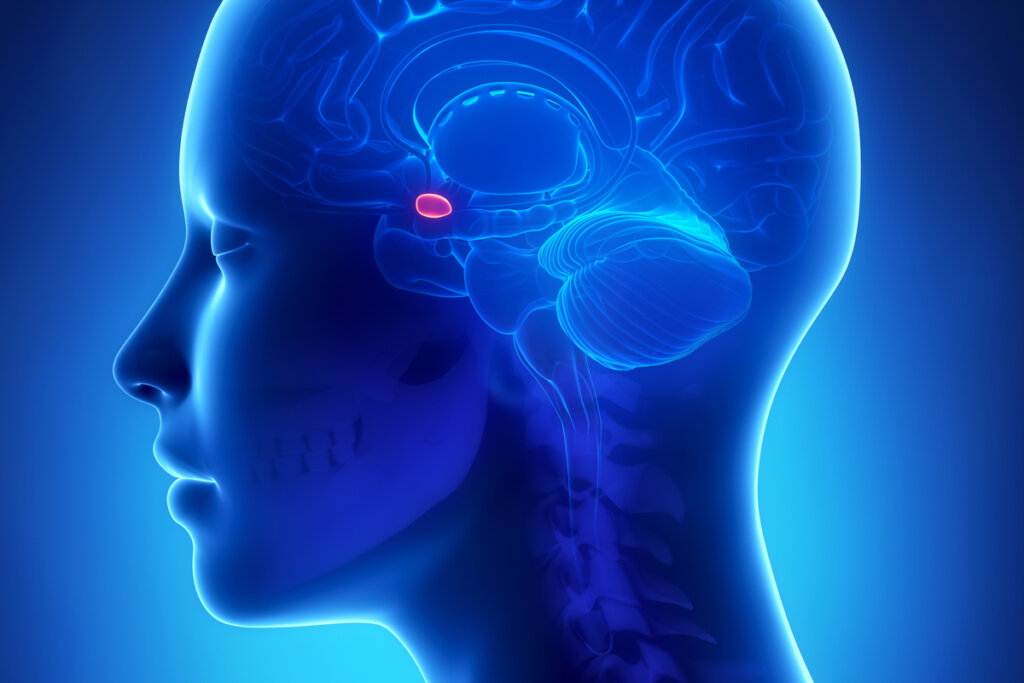How to Regulate the Activity of Your Amygdala and Improve Your Life


Written and verified by the psychologist Valeria Sabater
You might not know that neuroscientist, Joseph LeDoux, a pioneer in amygdala research, is also a singer-songwriter for a rock band. The group is called, unsurprisingly, The Amygdaloids. The university professor claims that researching this region changed his life.
His work on this subject began in the 1980s when the world was more interested in the area of the hippocampus. He showed us that the amygdala is key to understanding oversized responses to threats in anxiety disorders. We might almost call it our ‘panic button’.
However, despite the fact that we tend to associate this region with more adverse emotions, it’s far more versatile and fascinating than you might think. Indeed, the amygdala also links emotional meaning to memories. Moreover, it allows us to process rewards and favors our decision-making.
As Dr. LeDoux explains, despite the fact that the amygdala is the architect of fear and threat, its activity can be regulated so that it mediates more stimulating and positive emotions. Music, a walk, or any activity that produces oxytocin can reduce its hyperactivity.
The amygdala controls the entire brain and all major body systems to respond to threats. It’s key to our survival. The problem comes when we see threats in almost all circumstances.

Regulation of the amygdala
To get an idea of what the amygdala does, think of it as a small detector always working in the background, monitoring everything while, at the same time, asking: “Are we safe?”. Its motto is “Better safe than sorry”. For this reason, we often act with a certain amount of prudence and caution to avoid any danger, error, slip-up, or catastrophe.
As a matter of fact, we’re indebted to the amygdala for many things, most importantly, our survival. This almond-shaped structure is submerged in the depths of the temporal lobe. It forms part of the limbic system and is decisive when it comes to processing the most intense emotions, whether they’re linked to fear or pleasure. However, sometimes, its operation can be altered.
There are many studies using magnetic resonance imaging that demonstrate a link between an overactivity of the amygdala and anxiety disorders. For instance, a study conducted by the University of Chicago (USA) highlights that this neurological peculiarity is a marker of conditions such as phobias or generalized anxiety.
There are several hypotheses concerning hyperactivity in the amygdala. For instance, being exposed to stressors over a sustained period of time almost always results in increased neural activity in the amygdala (Correll, Rosenkranz, & Grace, 2005). The positive news is that this can be reversed.
There are strategies to regulate the activity of the amygdala and live better. We’re going to take a look at them.
When the amygdala is extremely hyperactive, we stop acting rationally and let ourselves be carried away by our emotions.
1. Nature walks
Our brains are hungry for fields, forests, land, seas, and natural settings. This is hardly surprising as they represent our origins and roots. However, in everyday life, we have hardly any time to connect with these healthy universes. But to do so would directly impact our mental well-being.
The Max Planck Institute for Human Development published an article that claimed a one-hour walk in a forest reduces hyperactivity of the amygdala. It also suggested that city dwellers have higher rates of anxiety, depression, and even schizophrenia than people living in rural areas.
Therefore, you should find some time and connect with nature.
2. Activate your senses to relax your mind
Feel, taste, listen, smell. Our senses connect us with the present moment. If there’s one thing we all need, it’s to reduce our loads of thoughts and stress. You can regulate the activity of the amygdala by employing the following strategies:
- Aromatherapy has the power to connect the olfactory nerve with the limbic system, the area linked to the emotional area of the brain, and also with the amygdala itself. So, make sure you take time and enjoy the kinds of fragrances you enjoy the most.
- Music favors stress regulation and oxytocin production. It excites you, connects you with the present moment, and leads you toward pleasant memories.
- Try and really experience the flavors of the food you eat and choose the healthiest options. That said, the most important thing is to eat without rushing, employing mindful eating. This means appreciating the taste, smell, texture, etc. in a relaxed way.
One way to regulate the activity of the amygdala is by promoting activities that increase the production of oxytocin.
3. Basic techniques for regulating stress
One essential strategy for regulating the activity of the amygdala is to apply stress management techniques on a daily basis. They’ll help you avoid the overactivation of your amygdala and also prevent you from being anxious. There are various strategies available, so look for those that best suit your own personality and lifestyle.
Here are just a few examples:
- Deep breathing and meditation.
- Jacobson’s progressive relaxation technique. This is a process that consists of systematically tensing and relaxing the different muscle groups of your body.
- Mindfulness. It has remarkable benefits for regulating brain and mental activity. Its objective is to allow you to be more aware of the present moment, of what’s surrounding you, and of the sensations of your own body.
- Clarify your priorities. Work out what’s important and what can wait so you can allow yourself time to rest. Indeed, nothing is as important as organizing your days well and looking after yourself.

4. Positive social connection, the great producer of oxytocin
When was the last time you spent a few hours chatting and laughing with your friends or family? If you want to modulate and regulate the excessive activity of your amygdala, you need to produce oxytocin. This hormone promotes affection, love, and care.
There are multiple ways to increase the production of oxytocin. They’re all simple to carry out. Furthermore, they have the power to reduce stress and enhance your feelings of well-being, calmness, balance, and even happiness:
- Hug your loved ones.
- Laugh and have fun whenever you can.
- Have interesting conversations.
- Enjoy walks and trips with your partner.
- Try and meet interesting people who help you reformulate your ideas and present you with new dreams.
Finally, remember that your brain is an organ with plastic qualities. This means you can modify it with new habits. If you reduce the impact of stress, live in the present, and promote social connections, your amygdala will stop seeing threats where there are none.
All cited sources were thoroughly reviewed by our team to ensure their quality, reliability, currency, and validity. The bibliography of this article was considered reliable and of academic or scientific accuracy.
- Loos E, Schicktanz N, Fastenrath M, Coynel D, Milnik A, Fehlmann B, Egli T, Ehrler M, Papassotiropoulos A, de Quervain DJ. Reducing Amygdala Activity and Phobic Fear through Cognitive Top-Down Regulation. J Cogn Neurosci. 2020 Jun;32(6):1117-1129. doi: 10.1162/jocn_a_01537. Epub 2020 Feb 4. PMID: 32013687.
- Sobota R, Mihara T, Forrest A, Featherstone RE, Siegel SJ. Oxytocin reduces amygdala activity, increases social interactions, and reduces anxiety-like behavior irrespective of NMDAR antagonism. Behav Neurosci. 2015 Aug;129(4):389-98. doi: 10.1037/bne0000074. PMID: 26214213; PMCID: PMC4518468.
- Sudimac, S., Sale, V., & Kühn, S. (2022). How nature nurtures: Amygdala activity decreases as the result of a one-hour walk in nature. Molecular Psychiatry, 1–7. Retrieved from https://doi.org/10.1038/s41380-022-01720-6
This text is provided for informational purposes only and does not replace consultation with a professional. If in doubt, consult your specialist.








